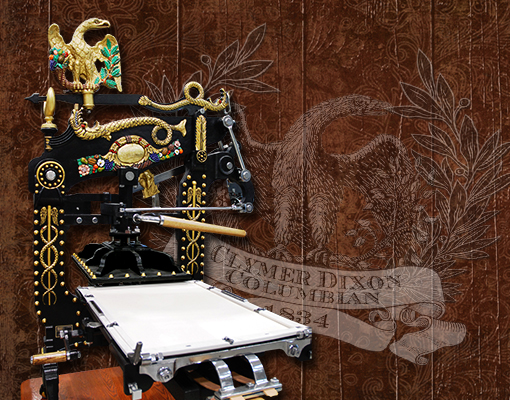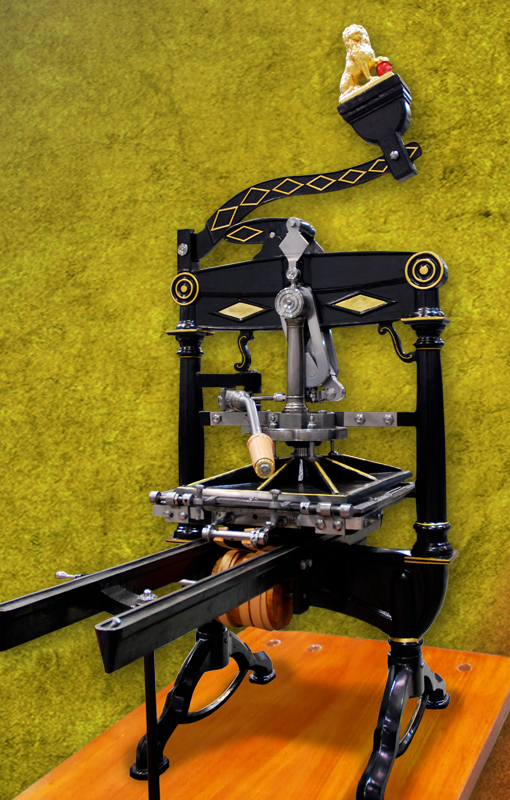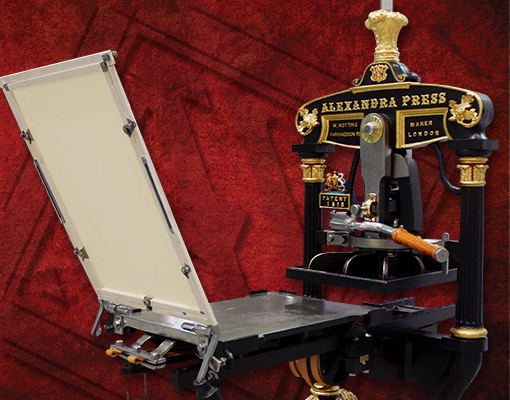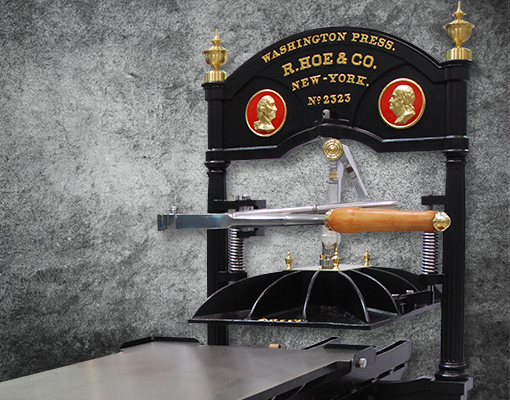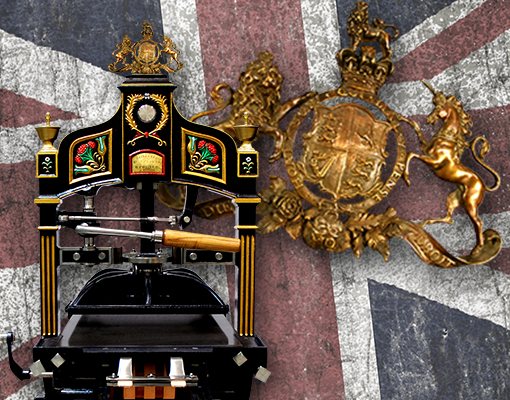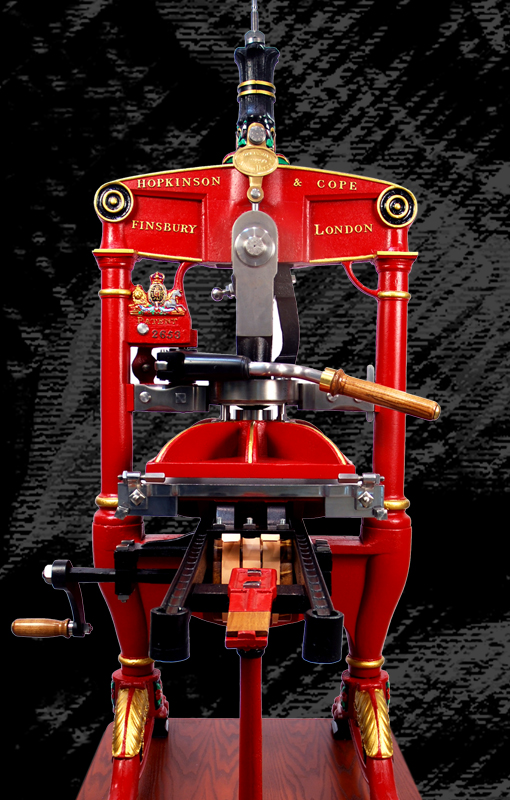Before 1800, very few developments occurred in the design and manufacture of the printing press. It was not till Lord Stanhope’s first all-iron press was manufactured in 1800 that there was enough technology to cast and machine precision parts. Shortly after that, a Philadelphian, George Clymer, invented what is today probably the most ornate printing press ever made. The Columbian press was the first machine to dispatch from the earlier wine screw platen and utilized a series of balanced levers to operate.
The Columbian was initially too heavy to move around and did not gain favour in America. It wasn’t until 1817 when Clymer packed up and moved to England, did his Columbian develop a market. One could say the Columbian was the first mass-produced printing press ever made. There are thought to be about 600 still in existence. However very few are Clymer’s own but made after patents ran out by other machine shops in the UK and Western Europe. Such notable names as Carpenter, Bevan, Woods, Figgins, and Harrild are the most well-known builders.
Known for the emblazoned American eagle on top of the counterpoise lever, the Columbian never let anyone forget it. Perhaps the noted English writer Hansard put it best when, in 1817, the machine was presented to the English:
“If the merits of a machine were be appreciated wholly by its ornamental appearance, certainly no other press could enter into competition with “The Columbian.” No British-made machinery was ever so lavishly embellished. We have a somewhat highly-sounding title, to begin with; and then, which way soever our eyes are turned, from head to foot or foot to head, some extraordinary features present themselves – on each pillar of the staple, a caduceus of the universal messenger, Hermes – alligators, and other draconic serpents, emblematize, on the levers, the power of wisdom – then, for the balance of power (we, rude barbarians of the old world, make mere cast-iron lumps serve to enforce our notions of the balance of power) we see surmounting the Columbian press, the talons Jove’s thunderbolts, combined with the olive-branch of Peace, and Cornucopia of Plenty, all handsomely bronzed and gilt, resisting and bearing down All Other Power!”
Richard W. Cope, an Englishman, was said to have been well aware of Clymer and his entrance into England. In 1820, Cope invented the next widely marketed iron hand press - The Albion. Some historical records indicate that Clymer had engaged Cope around 1817 to build the Columbian. However, whether true or not, the Albion was nothing like the Columbian and went on to massive success. It was refined by others, such as his successor, Hopkinson.
Various Albion versions exist, and the HIW has several examples, including an 1870 Hopkinson-Cope Improved and R.W Notting’s 1883 Alexandra, which memorialized the 1863 wedding of Princess Alexandra of Denmark to Britain’s Prince Albert.
GO TO THE GALLERY »
